AVVG is manufactured according to the following standards:
GOST 16442-80
TU 16.K01-37-2003
35222211 - AVVG cable (660V)
35377152 - AVVG cable (1000V)
Application of AVVG cable
- when laying in rooms (tunnels), channels, cable half-floors, shifts, collectors, industrial premises(dry; wet, partially flooded in the presence of an environment with weak, medium and high corrosive activities);
- when laying in the ground (trenches) with varying degrees of corrosive activity, with and without stray currents (should not be subjected to tensile forces during operation)
- when laying in explosive zones of classes B-Ib, B-IIa, in the absence of mechanical damage in operation;
- when laying on special cable racks, on bridges, in blocks;
- for laying in fire hazardous premises.
Also, the AVVG cable is designed for installation in vertical, inclined and horizontal routes. AVVG can be used in places with high vibration, but in such an environment it is better to use AVBbShv.
- AVVG ng - do not propagate combustion with a single gasket (IEC 60332-1 standards);
- AVVG ngLS - do not spread combustion when laid in bundles (standards IEC 60332-3 category A). Reduced smoke generation during combustion (IEC 61034-1, 2 standards);
- AVVG chl - cold-resistant, at a temperature environment from +40°C to -60°C (Fire hazard class according to GOST R 53315-2009 O 1.1.2.3.4);
- AVVG t - made in a tropical version, resistant to mold fungi;
- AVVG z - with filling, for the power supply of electrical installations that require sealing when entering electrical equipment.
AVVG cable design
1. Aluminum conductor (from 1 to 5) single-core (OJ) or multi-wire (MP), sector or round shape (GOST 22483-77).
2. Core insulation made of PVC (polyvinylchloride) compound with a distinctive color: when the cores are constructed in a 3 + 1 cable, the zero core is blue, the rest are red, yellow and green; the ground wire is executed in yellow-green color. The cores, after applying insulation, are twisted into a core. With a sector version, the cores after twisting are covered with a polyethylene terephthalate film. AVVG-P cable (two-core, three-core): with this design, the cores are arranged in parallel (do not twist), this cable is becoming more and more popular with electricians.
3. The outer sheath is also made of PVC compound, applied by extrusion. When performed by AVVG ng, the sheath is made of low flammability PVC compound, and is also marked in order to prevent replacement with cable products with similar characteristics.
Specifications of AVVG cable
- operating voltage: 0.66kV, 1kV;
- rated frequency: 50Hz;
- laying and installation of cables without preheating is carried out at a temperature not lower than -15 ° C;
- service life: 30 years;
- warranty period: 5 years.
AVVG cable is a part that serves to distribute and transmit electric current to stationary installations in nominal AC voltage. Often, the concentration of electricity in it ranges from 650 to 1000 V. In this case, the frequency of the current supply can reach 50 Hz or more. Where is this wire used and what does the AVVG cable have specifications?
Purpose
This device is used in and serves as a kind of conductor between the current source and the consumer. It is laid underground, sometimes in the open air or in cable channels. And if we consider the scope of the AVVG cable in more detail, then it is used almost everywhere, but only in those places where the possibility of damage and large tensile forces is reduced to zero.
About design
AVVG cable can be either single or stranded. At the same time, the cores themselves are made of durable. Depending on the material used, parts with a cross section from 2.5 to 240 millimeters (first class) or from 70 to 240 millimeters (second class) are also distinguished. They are single-wire and multi-wire products.
In the design of the AVVG cable, there are also insulation elements. It is mainly PVC plastic, which isolates the surface of the wire from impacts. external factors. The cores can have digital (0, 1, 2, 3, and so on) and color (white, green, crimson) markings. The first type of cables is mainly used on large wires with a cross section of 70 mm 2 or more. 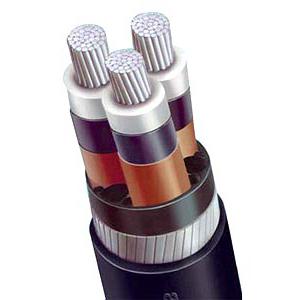
Speaking about the insulation elements, it should be noted that the PVC filling is superimposed with the wire sheath at the same time and separates it from external environmental influences. For parts with a cross section of 16 square millimeters or more, non-woven fabric insulation is used. A double layer of PET film and PVC film tapes is used here as a protective cover. In addition, galvanized tapes with a bituminous surface and PET films can be used in production. The sheath is made from PVC.
AVVG aluminum cable and its technical characteristics
This type of wire is intended for use in environments with air temperature from -49 to +49. In this case, the maximum humidity of the environment can reach 98 percent.
The maximum temperature at which the AVVG cable retains its conductor properties is +70 degrees Celsius. The maximum heating temperature of the conductors of the wire in overload mode is +80 degrees (provided that the heating duration is not more than 8-9 hours per day or 1 thousand hours of operation for the entire service life). In case of a short circuit with a core temperature of up to 160 ° C, the AVVG cable can retain its properties and not be deformed for 4 seconds. 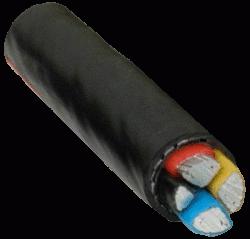
Thus, the AVVG type cable is one of the best devices for conducting electricity, therefore it is used in all fire and explosion hazardous rooms, tunnels, mines, cable racks and just in the open air.
When purchasing an electrical cable in a hardware store, most often we are interested in its cross section, because it is from it that the current load in the house network is determined. Less often, we pay attention to the marking, although it is in it that the structure of the cable and its technical characteristics are laid down. For example, decoding AVVG. What does this abbreviation mean, what semantic code do these letters carry? About this and the rest in this article.
First, let's start with the fact that in the category of AVVG cables there is a fairly large range of models, so some letters or numbers are always added to the marking. Each of them means something. But first, let's analyze the decoding of AVVG itself.
- The letter "A" means that you have an aluminum cable in front of you. If this letter is absent, that is, the marking is limited to three letters VVG, then this means that the cable is copper.
- The first letter "B" indicates that the insulation of the cable cores is made of polyvinyl chloride (PVC), or as it is also called plastic compound.
- The second letter "B" denotes the outer insulation of the entire wire, that is, the sheath. It is also made of PVC.
- The letter "G" is an indicator of the absence of an armored layer in the cable, as if it were naked.
There are markings and digital designations. For example, cable AVVG 4x25 or 4x16. What it is? In the first case, this is a four-core cable with a core cross section of 25 mm², the second with a cross section of 16 mm².
Attention! AAGB cable with a cross section of more than 25 mm² is available only in a multi-wire version.
Since the model range of this type is quite wide, because there are different conditions operation of electrical networks, then, accordingly, alphabetic and sometimes numeric designations are added to the marking. Let's give some examples.
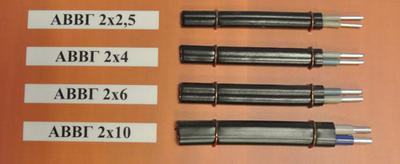
- AVVG-P is a flat material.
- APvVG - phase insulation is made of vulcanized polyethylene.
- AVBbShv - armored hose type with a PVC sheath.
- APvBbShv - the same as the previous model, only with polyethylene phase insulation.
That is, each performance has its own marking abbreviation, which, by the way, not all electricians understand. I would like to focus on one brand, which today is preferred by many design organizations. This cable is AVVGng(A) or AVVGng(A)-LS (HF).
- First, the letter "A" in brackets indicates that this electrical wire corresponds to fire safety category "A". That is, it does not spread the flame.
- Secondly, the symbols "ng" are the marking of a product that does not spread flame in a group gasket.
- Thirdly, "ng-LS" - does not spread combustion, but with minimal smoke.
- Fourthly, "ng-HF" - and does not spread combustion, and will not emit smoke.
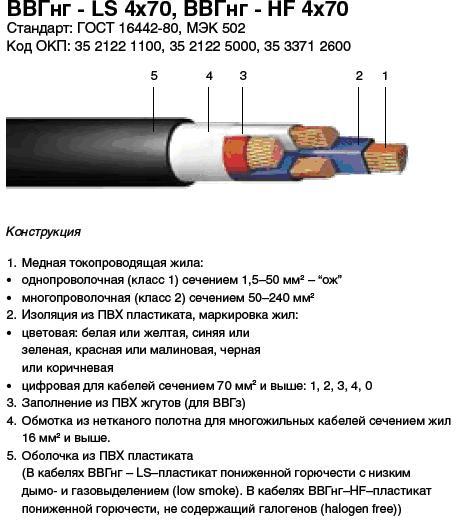
AAWG device
The cable core is a round section aluminum wire. As mentioned above, the insulation and sheath can be different, but mostly it is polyvinyl chloride or polyethylene. Models for voltages above 6000 volts are available only in a three-wire version.
In four-core wires, all cores can be of the same section or three of one, zero with reduced. For example, AVVG 3x10-1x6.
Where to use
Power cable AVVG is designed to create electrical networks and connect equipment with alternating voltage of 6000 and 10000 volts with a frequency of 50 Hz. The most important thing is that this cable can be laid in almost any conditions, in any premises. For example:
- In damp areas.
- On flyovers.
- In the tunnels
- In special trays or boxes.
- By air.
- Where there is vibration.
- At the facilities of nuclear power plants.
In this case, it is necessary to adhere to certain conditions for its operation.
- Temperature range from -50C to +50C. Can withstand temperatures up to +75C for a short time.
- Relative air humidity 98% at +35C.

Attention! If the air temperature during the laying of cabling is below -15C, then the cable itself must be warmed up. This will simplify the installation process.
- Bending radius - single-core AVVG - 10 dimeters, stranded - 7.5 diameters.
- Manufacturers give a guarantee for five years after the product is put into operation. The practical service life is not less than 30 years.
Let's face it, these technical characteristics indicate the high quality of the electrical cable.
Aluminum power cable AVVG is used to power consumers of various categories. Designed for rated alternating voltage 0.3/0.5 kV and 0.6/1 kV, at a frequency of 0 Hz and above.
The AVVG power cable is used in power supply, it supplies power to receivers from current sources. Cable laying may be carried out in the ground, open areas and in cable channels are also possible. This type of cable is found wide application in human activities. Installation of AVVG cables can be carried out in a room of any humidity level. The scope of application covers both industrial and domestic facilities, includes vertical and horizontal backbone networks, cable racks, tunnels, mines, laboratories, residential premises, block structures, etc. The type of premises where laying is possible also includes premises with an increased level of explosion hazard (class 1b, 1d, II). The product is resistant to corrosion processes.
Cable modifications without armor can be used where there are no mechanical vibrations.
Does not burn or ignite when laying a single cable. Availability in the label letters"ng" and "ng - LS", a cable that does not spread fire, allows you to lay in bundles.
The shape of the conductors is possible flat, marking "P". Climate type index "T" (tropical climate) means that the product does not decompose, does not react with the environment.
Design
AVVG power cable and its components:
- Aluminum conductors.
- The insulating material is made of polyvinylchloride compound. Insulation colors can be pre-ordered, usually black or white. The marking is embossed and printed, the length is indicated in meters.
- Winding
- Outer sheath made of plastic. Each manufacturer presents its own color scheme. Grounding conductors are covered with yellow, green sheaths. Bearing cores are blue or bluish.
Characteristics of the AVVG cable
Consider the characteristics of the AVVG cable. Aluminum power cable AVVG can be single-core, stranded. The core is made of high-strength aluminium. Conductors are divided into 2 classes and depend on the cross section. Class 1 includes sections from 2.5 to 240 mm 2, class 2 from 70 to 240 mm 2. The AVVG power cable is insulated with polyvinyl chloride (PVC) plastic compound. Insulation reduces negative impacts environment. Marking is performed in the form of numbers (0,1,2,3), color highlighting (white, black, green) is also possible. Cables with a cross section of 70 mm 2 are more used on enlarged conductors. The specific weight of the AVVG cable at the rate of 1 km with a voltage of 0.66 kV is 543 kg. With a voltage of 1 kV, the weight is 559 kg.
Power cable properties
Aluminum power cable AVVG cannot ignite and is fireproof during single installation. It has high moisture resistance at an ambient humidity of 98% and a temperature value of 35˚C. Subject to the requirements and recommendations of manufacturers, the service life will be at least 30 years.
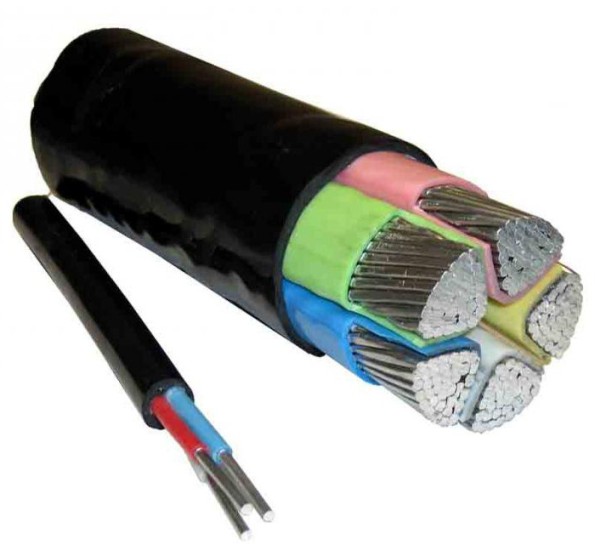
AVVG: cable decoding
- A - aluminum current-carrying wires;
- B - the first letter indicates a vinyl shell, the second letter indicates a vinyl insulation.
- G - unprotected wire, without sheath.
- The cable type is indicated after the dash. For example, AVVG-HL. Designations can be combined.
- T - type of climatic modification - tropical.
- OZH - the core is made of a solid conductor.
- P - the shape of the conductor is flat.
- MN - the number of cores is greater than one.
- MP - the core is made of braided wire.
- NG - the conductor does not spread combustion and is non-combustible.
- HL - operation is possible at a sufficiently low ambient temperature.
- LS - FDDU conductor, reduced level of smoke and gas emission.
- NG-P - cable bundles do not allow combustion to spread.
- 1 - the value of the operating voltage is 1 kV.
- 660 - power value 660 watts.
AVVG cable: specifications
Temperature for normal operation power cable is between -50 and +50 °C. The value of the humidity level of the surrounding air space φ ≤ 98% and temperatures below 35˚С. In various modes of operation, the limiting temperature for heating current-carrying conductors is limited. Under normal conditions 70˚С, under thermal overloads and short circuits 80˚С. The duration of the operating mode in abnormal conditions is also subject to limitation. Exceeding the maximum allowable temperatures limits the operating time to 8 hours and a total of 1000 hours for the total operating time. Compliance with the requirements and recommendations will allow the use of a power cable for at least 30 years.
Testing of AVVG cables with alternating voltage
With an operating voltage of 660 V and a power of 3 kW, the test time is 10 minutes. At a voltage of 1 kV and a power of 3.5 kW, the test time is 10 minutes.
AVVG cable is characterized by low cost and good quality. It is widely used for supplying warehouse and factory premises, in residential buildings and as an input for switchgears. If the initial heating is not taken into account, then for single-core cables with a bending radius of C 10 Dh, the minimum temperature is -15˚C. For multicore cables the temperature is similar, but the bending radius is C 7.5 Dh.
Cable design
Cable cores are made of solid wire, soft aluminum grade. There are rare modifications of copper conductors (VVG). The number of cores varies from 2 to 5, there are varieties with the number of cores 3 and 5 with the presence of a carrier core.
Single-core cables are made for a section of 2.5∙240 mm 2, defined as section category 1, using a solid wire. Braided wire belongs to the second class, section 70∙240 mm 2. Black or white polyvinylchloride compound is used as an insulating material. It is also possible to order with the necessary colors. The shells are also made of polyvinyl chloride. Color marking selected by the manufacturer. The color of the grounding conductor is yellow-green, the carrier conductor is blue.
The footage is indicated on the product label. Indexing takes 4 mm. The power cable is used to power consumers at a power of 660 and 1000 W with a frequency of 50 Hz.
Installation of AVVG cable
Installation of AVVG cables is possible in two ways: open and closed. The first method involves laying in areas where the risk of fire is reduced or absent. The power cable does not provide a protective sheath against mechanical damage, and therefore, manufacturers recommend using special pipes for electrical purposes or a metal sleeve. Installation and laying must be carried out in accordance with the requirements of the PUE and SNiP. The ambient temperature during laying should not be lower than -15˚С. Cables, special boxes and other products allow laying cables in the air and using cables to connect buildings and structures, but it is necessary to take into account the mass of conductors, precipitation and temperature changes. The climatic version and the type of room allow operation at a high level of humidity.
The closed method represents more safe way. Does not violate the architecture of the area. In concrete and other hard non-combustible surfaces, chasing is performed, where the cable is laid, then it is covered. If there is a possibility of surface fire, then additional protection must be provided, such as a box, a metal sleeve, etc. We do not recommend the use of PVC materials. Under such fire conditions, it is more desirable to use a cable with the index "ng" or "p".
Installation of this type of conductor should not be carried out in the ground. Because cable conductors do not have the required protective structure against mechanical damage.
Available quality control methods
There are several ways of preliminary control and accounting of the quality of manufactured cables in case of non-compliance with the requirements of GOST or before its verification. Full verification can be carried out only in the appropriate laboratory, observing the requirements of regulatory and technical documentation.

External examination (primary)
The initial control should reveal the numerical correspondence of the cores, wires and color marking. The integrity of the insulating material must be checked. Complete absence of mechanical defects. If a defect or nonconformity is found, the manufacturer or supplier must be notified. The warranty period for products is an average of 5 years and starts counting from the moment of its operation.
Measurement of structural dimensions
Checking the diameter of the core, their number, the thickness of the insulation is carried out using a special tool. Using the equipment specified by the manufacturer of the ohmmeter, multimeter, the cross section of the current-carrying conductors is checked.
AVVG power cables with aluminum conductors are of low cost and good quality and have established themselves in the electrical market as the best conductive equipment. The service life will be at least 30 years, subject to the requirements of operation.
Cable AVVG 4x16 belongs to the power group of conductors, characterized by the maximum area of aluminum current-carrying cores in its class - 16 mm2. There are four wires in the cross section of the wire. Most often, the cable is used in electrical networks and power lines with fixed equipment connection. Fits …
AVVG is a cable consisting of aluminum conductors, flexible, each conductor is protected by an insulating layer of polyvinyl chloride material, in addition, the cable itself has a protective outer sheath consisting of PVC compound.
Due to its low cost and excellent quality, the AVVG cable has established itself as the best conductor for industrial, warehouse, residential multi-apartment premises in lighting networks, internal wiring, and also as input cable to distribution devices.
The cores of the AVVG cable are made of soft grades of aluminum, which makes it more flexible in operation, but also fragile if improperly installed. The cores have two types of execution - round and sector. Depending on the application, the cable core is made both single-wire and multi-wire having many sections according to GOST.
The AVVG cable is intended directly for the transmission and distribution of electricity with a voltage of 660 and 1000 volts. alternating current and a frequency of 50 Hz. The temperature difference that ensures the normal operation of the cable is from -50°С to +50°С. The maximum allowable heating of the cable core must not exceed + 70°C, excluding the heating time. Although in an emergency situation, the core of the AVVG cable is able to withstand heating up to + 80 ° C.
Permissible temperature regime cable installation varies from -15°С to + 50°С. At ambient temperatures below 15°C, preheating of the cable is required.
During the installation of the cable on turns, descents, ascents, it is necessary to observe its bending. In order to avoid damage to the cable, the bend should be 10 diameters for single-core, and 7.5 for multi-core. With proper installation and operation of the cable, the service life is 30 years.
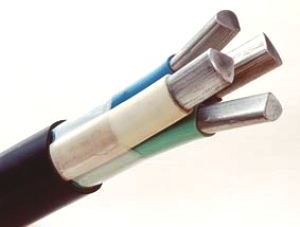
AVVG cable installation methods
1. Concealed cable routing:
The hidden way of laying the cable is the safest and most aesthetic type of installation. The cable is laid in voids, channels, strobes of surfaces made of non-combustible or slow-burning materials with subsequent sealing of these places and does not require additional protection. For concealed installation in easily combustible structures, it is necessary additional protection asbestos pipes, metal pipes, metal hose, etc. Protection from PVC materials for this type of cable is undesirable.
2. Open cable routing:
Open laying of the AVVG cable is carried out on the surfaces and ceilings of rooms that do not support combustion and do not have the possibility of mechanical damage to the cable. Installation is carried out taking into account all the rules of PUE and SNiP. Also, open laying on combustible surfaces with the use of specialized protection such as electrical pipes, metal hose is acceptable for AVVG cable. In this type of installation, PVC protection is not allowed.
The method of open installation also includes cable laying on trays, cable channels, boxes. At the same time, the parameters of the installation of structures are selected based on the design of the premises in which the cable will be laid, and environmental factors in which the cable will be operated are also taken into account. When installing the cable in an open way from building to building, it is possible to install the cable on cables selected according to the characteristics of the cable and withstand tension, cable weight, sag, ice, etc.
3. Laying in the ground:
The AVVG cable, like many other cables, is not recommended for laying in trenches, soils. AVVG does not have its own protection against mechanical impact on the cable sheath, which in further operation leads to cable failure.
When carrying out installation, it is necessary to use, as well as Construction Norms and Rules (SNiP).





